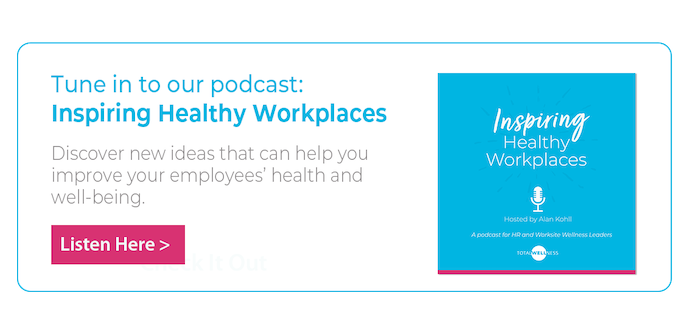 In the United States alone, 8 million people have PTSD.
In the United States alone, 8 million people have PTSD.
PTSD, which stands for Post Traumatic Stress Disorder, isn’t just limited to war veterans, either.
The disorder impacts those who have been involved in traumatic events like car accidents, natural disasters, sexual assaults, and other life-altering situations.
June is PTSD Awareness Month. More specifically, June 27 is PTSD Awareness Day.
While most people have a general idea of what it is, some employers are unsure of how to approach the sensitive topic.
Here’s a look at what PTSD is and how to help employees dealing with it:
Post Traumatic Stress Disorder (PTSD)
While it is most often tied to soldiers, PTSD can impact anyone — civilian or military. It can also impact people of all ages. The most important point to remember is that many factors play into someone having PTSD, many of which are not in a person’s control.
What is PTSD?
PTSD is a long misunderstood condition caused by experiencing a terrifying or traumatic event. It is often tied to a one-time traumatic situation, but long-term exposure to multiple traumatic events — like as an EMT or law enforcement official — can increase chances of PTSD developing.
Traumatic events that can cause PTSD:
- Sexual or physical assault
- Child sexual or physical abuse
- Serious accidents
- Combat or other military experiences
- Terrorist attacks
- Natural disasters
PTSD can be triggered from personal experience or from learning of a loved one's experiences. This mental health disorder was recognized as a specific condition in 1980.
What are the Symptoms of PTSD?
People with PTSD experience the disorder in different ways. Symptoms may manifest long after the event has passed and can include:
- Flashbacks and nightmares of the event
- Difficulty remembering the event or time around the event
- Abrupt mood swings (easy to anger or irritate)
- Emotional numbness
- Jumpiness
- Difficulty sleeping and concentrating
- Depression
- Suicidal thoughts
- Guilt
Additional health issues may pop up as a result of PTSD, too. Other mental health concerns that may occur include anxiety, alcohol and drug abuse, depression, and thinking about harming others or self.
Why do we Recognize National PTSD Awareness Day?
While PTSD does impact more than combat vets, PTSD Awareness Day in particular was created after a particularly devastating military community loss. June 27 is the day dedicated to spreading PTSD awareness across the U.S.
Here’s some insight of how the day came to be:
- In 2007, Staff Sergeant Joe Biel, North Dakota National Guard member, committed suicide while suffering from PTSD after two tours in Iraq.
- Senator Kent Conrad of North Dakota was instrumental in obtaining official recognition of PTSD by creating PTSD Awareness Day in 2010.
- June 27 was Sergeant Joe Biel’s birthday.
- The month of June was declared National PTSD Awareness Month by the Senate in 2014.
PTSD in the Workplace
Since anyone can experience PTSD, it’s important for employers to understand what symptoms to look out for and how it can impact the workplace. This allows for employers to better direct an employee to resources that can help.
Here’s what PTSD looks like in the workplace:
Impact on Employee Productivity
When someone is diagnosed with PTSD, it can impact multiple areas of their life, including their ability to do work well. Those struggling with PTSD experience:
- Higher rates of absenteeism and time off for medical reasons
- Difficulty coping with the demands of the job
- Are more likely to be unemployed or underemployed
- Suffer from other conditions like depression, alcohol or drug abuse
Acknowledge PTSD Concerns
Acknowledging, understanding, and accommodating for PTSD will make your company culture stronger. It will also help those dealing with PTSD to feel empowered knowing they have support from their employer. Ways to support employees may include providing necessary accommodations for employees diagnosed with PTSD like:
- Noise-canceling headphones
- Written or video instructions for tasks
- Well-lit buildings and parking areas
- Remove triggers when possible
- Allow flexible schedules and task due dates
Creating a culture of understanding and acceptance can also help the employee to feel less stigmatized. A combat vet may feel better if you allow them to arrange their office to maximize security. For example, let them adjust furniture, sitting position, etc., so they can see the door, if needed. By being accommodating, you lessen the employee’s anxiety and fears while showing support.
Educate Employees During PTSD Awareness Day
PTSD can affect anyone and symptoms may not present until years after the event.
That’s why learning about potential triggers can help you better prepare for handling PTSD in the workplace.
A variety of experiences can prompt the onset of PTSD, like the loss of a loved one, violence, accidents, or serious job-related stress. As an employer you can’t ask if an employee is experiencing PTSD. If an employee shares their concerns, you can ask how you can help. Their accommodation requests may not be as complicated as you may think.
Some employees may not even know what they are going through may be related to PTSD. Since employers can’t ask, providing resources and educating employees may guide workers into getting the help they need.
This month, share PTSD facts in a newsletter, host a psychologist for a lunch and learn, or create a bulletin board with PTSD statistics and facts for everyone to see.
Keep the National Suicide Prevention Lifeline on hand, too. The number is 1-800-273-8255.
What training or support services does your company offer to those dealing with PTSD in the workplace? Share in the comments below!



